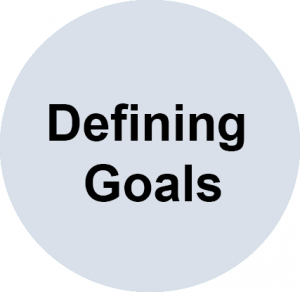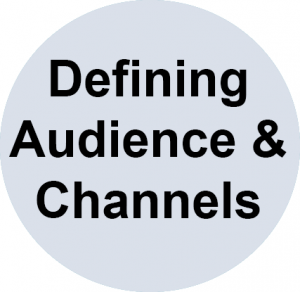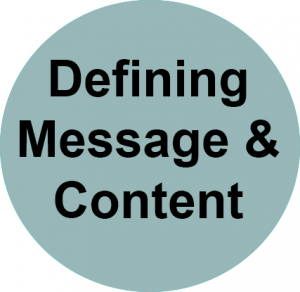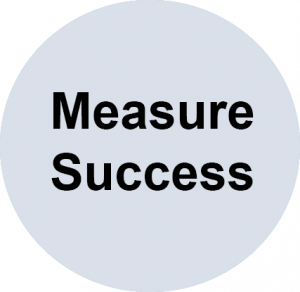29 Communication Tools and Strategies | Key Components of a Communication Plan | Determining your message and content




Now that you have your goals clearly defined and have identified the audiences you must reach in order to reach those goals, it is time to consider what content you need to produce in order to reach your communication goals.
Existing Content
First take stock of what content you already have readily available. You may already have content ready that just needs to be modified in order to fit the desire audience and platform. For instance – an infographic could be a more engaging way to communicate the value of your research to someone from outside academia, such as a magazine publisher or industry partner.
Take a few moments to brainstorm the following questions:
- What content do you already have available?
- Is this content something your target audience would be interested in?
- What form is your existing content in (video, images, text, etc.)?
- Could this content be adapted to fit the channels / platforms outlined in step 2?
Criteria to evaluate your content
In the event that you do not have any suitable content available, you may need to start creating new content that fits your communications plan. The form this content comes in will vary greatly depending on various factors such as:
What type of content does your audience want to see?
Put yourself in the shoes of your audience. Are they interested in reading technical write-ups of your research, or would they prefer an easy to read image that explains your research at a high-level? When in doubt, use two-way communication to ask your audience what type of content they are interested in! Provide a way for your audience to respond to any content you communicate.
What types of content does your selected platform accept?
Most platforms and channels have technical limitations on the types of content that can be shared or posted. For example, it may be difficult to include videos in a newsletter, but platforms such as Reddit greatly favour visual content such as photos or video. If you are submitting an op/ed to a newspaper, your research may need to be presented in clear language, inverted pyramid writing style.
 Deeper Dive
Deeper DiveWilfrid Laurier University Writing Centre: Writing an op/ed
Queens University: How to write for The Conversation
The Op/Ed Project: Op-ed Writing: Tips and Tricks
Types of content that are the most effective on your desired platform
Every communication channel has different types of content that does a better job at reaching your specific targeted audience than others. Understanding which content should be used on which channels will have a significant impact on the effectiveness of your communications plan. To determine what type of content to use on each platform the best strategy is to look at what type of content is receiving a high amount of views and engagement on your target platform. This can be done by finding articles that highlight the best practices for a given platform, or by examining popular content on a platform.
For example, this Hubspot article highlights some methods to make your newsletter standout, which results in an increased open rate. On social platforms such a reddit, you can be easy to identify popular content by sorting the posts by number of upvotes. For example, some of the top posts on /r/Technology and /r/AskAcademia are links to news articles that other users have found to be interesting. News articles and updates about your research activities could be shared on these subreddits to increase visibility.
Messaging
The messaging of your communication can be just as important as the type / format of your content. When in doubt always refer back to your SMART goals to make sure the messaging of your communications contributes towards achieving your goal. If your goal is to increase interest from funders, you need to ensure that your message is engaging and interesting to that audience in particular.
Language is important
Depending on the audience you are trying to reach you may need to adjust the type of language you use to describe your research and academic activity. Using technical terminology may be appropriate if you are communicating with other academics from your field of study, but may not be as appropriate for communicating with media outlets We will discuss this topic in more detail in the next section of this module.
Frequency
There are a number of factors in your communications plan that will determine how frequently you should be communicating. Your audience, content, and channels all have a direct impact on determining frequency.
Channel / Platforms
The frequency of your communications will vary greatly on the type of platform or channel you decide to utilize. Certain software-based communication tools use algorithms that favour certain posting frequency. In addition, certain platforms perform better at certain times in the day. Newspapers and other outlets have specific publishing frequencies that determine the best times to send out news releases. It is important to conduct your own research to determine the specific best times and frequency for your selected channels. One of the leading newsletter platforms, Mailchimp, has found that Monday to Thursdays from approximately 8 am to 12 pm appears to be the best time to send email campaigns. This trend is particularly true for professionals, government agencies, and non-profits.
Content
The type of content you are producing may also impact the frequency of posting you are able to maintain. Some forms of content, such as videos, may be time consuming to develop and may not be a sustainable content form for your team. It is important to recognize and plan around the limitations of your team and budget.
With all forms of content, it is important to consider and apply the principles of Accessibility and EDI (Equity, Diversity, and Inclusion). These important considerations will be discussed in further detail in module 5.
Audience
Depending on your target audience and the corresponding channel, you may need to adjust your frequency in order to attract the attention of your target audience. Similar to your channel and platform, this will come down to conducting your own research in order to determine a frequency that works for the specific audience you are trying to communicate with or the platform you are using.

